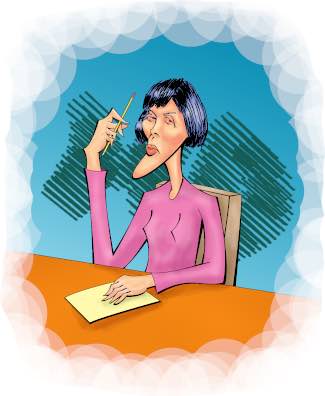
H. D.
Poétesse1 Imagiste
Although in English the word "poet" is the preferred term for both men and women, in French, a language with grammatical gender, the feminine form is still properly used.
H. D.
(Psst! Hilda Doolittle)
For those who in their student days found poetry not only a burden and a chore - particularly when having to memorize long, lengthy, (and boring) tomes like "Evangeline" but just plain silly - you might want to give the poems of Hilda Doolittle a try. Like the oeuvres of Emily Dickinson and E. E. Cummings2, Hilda's poems are brief and concise and accessible.
It's common to see the name of Edward Estlin Cummings with his first and middle initials sans punctuation and everything in lowercase, ergo, e e cummings. You may even read he legally changed his name to unpunctuated lower case.
But in ordinary correspondence and when signing his name, E. E. stuck with the conventions. And in the original publications of his poems in magazines, the name was written as E. E. Cummings with proper punctuation and capitalization.
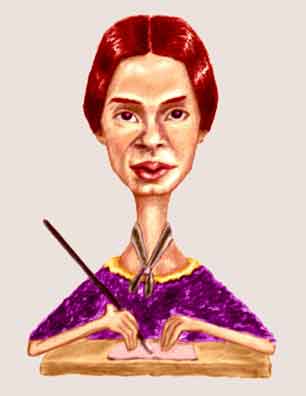
Emily ...
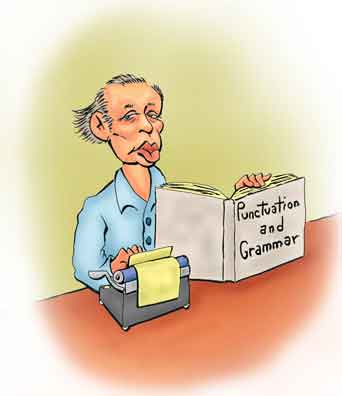
... and E. E.
Brief and Accessible
Hilda was born on September 10, 1886 in Bethlehem, Pennsylvania - one of the traditional coal and steel communities that once peppered the Keystone State. When she was eight the family moved to Philadelphia, not yet the Town That Snowballed Santa Claus. Instead Philly was one of the intellectual centers of America.
Hilda's family was in fact quite cerebral. Her mom taught music and art and her dad was a professor at UPenn. Hilda herself attended college at Bryn Mawr in the Philly suburbs. She might have opted for Penn but it had only begun admitting women a few years earlier. Bryn Mawr, on the other hand and although relatively new, had become one of the most prestigious women colleges in the country. Hilda enrolled in the course for teaching since that was one of the few - quote - "respectable" - unquote - career paths for women. But Hilda's interests were less pedagogical than literary.
At a Halloween party in 1901 Hilda met a young chap named Ezra Weston Loomis Pound. Hilda was fifteen and Ezra had (literally) just turned sixteen, but the precocious aspirant was already a student at UPenn. Two years later he switched to Hamilton College in New York.
In 1905 the pair decided to get married. But they delayed immediate plans when Ezra received a fellowship at Penn that let him study in Europe. But his rather cantankerous nature rubbed the professors the wrong way (Hilda's folks didn't like him either) and the fellowship was not renewed. Ezra then got a job teaching at Wabash College in Indiana. Unfortunately an aspiring bohemian poet with an in-your-face attitude didn't fit into small town middle America either and he got the boot.
Somewhere along the line Ezra and Hilda's personal plans fizzled out. Certainly later events show that while Ezra was a fine poet and played a great game of tennis, personally he was a jerk.
Although the planned nuptials were cancelled, their friendship continued all their lives. In 1908 Ezra settled in London and Hilda followed suit in 1911. In the interim, though, Hilda found she preferred the company of women, which isn't surprising seeing her erstwhile fiance's somewhat feckless approach to life.
But this was still the era where traditional family values ruled and Hilda met a young Englishman named Richard Aldington. Possessed with rugged good looks and fortified by studies at the University of London, Richard got by as a journalist supplemented by handouts from his family all the while turning his thoughts more and more to literature.
Hilda and Ezra and Richard began writing serious poetry. Their poems were usually short and concise and focused on the visual. Someone, probably Ezra, dubbed the poetry Imagism. The definition as has finally shaken out is:
... the use of the language of common speech, precision, the creation of new rhythms, absolute freedom in choice of subject matter, the evocation of images ...
... and the purveyors were, of course, called the Imagists.
Hilda's first poems were published in Poetry magazine in 1913. The next year Ezra gathered them together with those of other poets and published them in the anthology titled (what else?) Des Imagistes (pronounced "day EEM-uh-ZHEEST"). Hilda signed her poems "H. D.", and it seems she preferred that name. So we, as do most of her fans, will call her as such.
The topic of this early poetry shows the influence of H. D.'s classical education. They also emphasize the visual as you can see in the first verse of "Hermes of the Waves".
Wind rushes
Over the dunes,
And the coarse, salt-crusted grass
Answers.
Which is the whole point. Imagists write poems to conjure up, well, images. And the poet is also supposed to weed out any and all excess verbiage. Ezra exercised a savage blue-pencil and he himself wrote what was the most famous and concise Imagist poem, "In a Station of the Metro".
The apparition of these faces in the crowd;
Petals on a wet, black bough.
The similarity of Imagist poetry and the haiku is evident which is not surprising since this form of Japanese poetry was a direct influence. Haikus have become increasingly popular in Western culture and some of America's 20th century poets - like Allen Ginsburg and Jack Kerouac - developed the haiku in English by keeping the three line structure but disregarded the strict meter of the original Japanese3. And while you might say that most haikus are Imagist poems, by no means are all Imagist poems haikus.
The Japanese haiku is a three line unrhymed poem with a 5-7-5 division of the characters when written in the Japanese script called hiragana. A hiragana character is sometimes equated with an English syllable but they're not always the same thing.
One famous poem by the haiku poet Matsuo Bashō (1644-1694) is:
古池や
蛙飛び込む
水の音
Furuike ya
Kaeru tobikomu
Mizunone
... which can be translated as:
A quiet still pond
A frog leaps and then falls in.
A splash! Then quiet.
As in most poetry, even the classical haikuists broke the rules and deviate from the 5-7-5 syllables.
Ironically what was considered a trash novel introduced the haiku to the post-World War II West. Most English speakers had never heard of a haiku until they read Ian Fleming's 1963 James Bond novel You Only Live Twice. At one point Bond's Japanese host, Tiger Tanaka, tells Bond about Bashō and the haiku. Of course, Bond had never heard of either and Tiger somewhat sardonically comments that Bond would think the Japanese grossly ignorant if they had never heard of Shakespeare, Homer, Dante, Cervantes, or Goethe. But Bashō, Tiger asserts, was the equal of any of them.
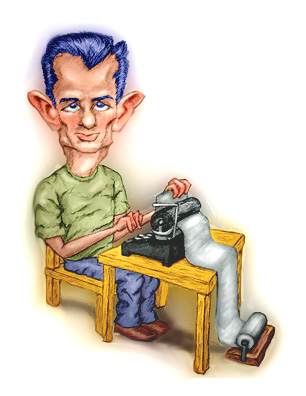
Jack ...

... and Allen
American Haikuists
In addition to featuring the verses of H. D., Les Imagistes had poems by Amy Lowell, William Carlos Williams, Allen Upward, Ford Madox Ford, Skipwith Cannel, John Cournos, Frank Stuart Flint, not to mention James Joyce and (of course) Ezra and Richard.
Ezra and Richard became editors for The Egoist which although of limited circulation became an important forum for the emerging poets. For such literary magazines a few hundred subscribers was considered pretty good. You wonder just what kind of financing made this kind of business possible.
Unlike today when the dwindling number of magazines make4 ends meet (and pay their executive bonuses) by cramming every nook and cranny with advertisements leaving scant space for their teensey-typed articles, the early literary periodicals kept afloat by the now largely obsolete phenomenon, the patron.
A patron was nothing more (and nothing less) than a rich person who would put up a chunk of their inherited family wealth in the interest of the arts. Or they might have a well-paying job that left some cash over for artistic5 investments.
Curmudgeons will maintain that this sentence does not use correct grammar. Instead, they point out with hauteur, it should be "the dwindling number of magazines makes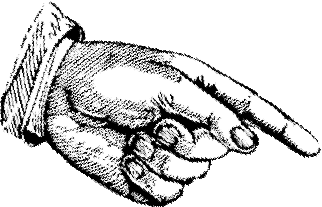 ends meet".
ends meet".
True, traditional grammar does require that the subject "number", being singular, should take a singular verb form "makes". And that would be "the dwindling number of magazines makes ends meet."
However more up-to-date analysis by "generative" grammarians like MIT's Noam Chomsky posits the word "number" is really part of a modifying phrase "the dwindling number of" which modifies the true plural subject "magazines". So this gives us:
[the dwindling number of] magazines make ends meet.
For the doubters of the modern analysis, they should remember the advice of no less an authority than the Merton Professor of the English Language at Oxford, John Ronald Reuel Tolkien. Ronald once responded to a correspondent who asked whether the correct grammar was "a number of walls is" or "a number of walls are". Ronald said you could say what you like. Yes, pedagogy dictates "a number of walls is", but common sense focuses on "walls" which is plural, giving us "a number of walls are".
Some patrons themselves were artists of considerable merit. Gustave Caillebotte used his family fortune to purchase paintings of the Impressionists and help set up exhibits and shows. But Gustave was also one of the founding Impressionists himself and his paintings can hold water with the best of them.
One of the most important of the early 20th century patrons was John Quinn, a rich American lawyer who would buy paintings from the artists and support individual authors. When helping out the writers, he would sometimes buy their original manuscripts so it wouldn't look like the writers were living on handouts. John was not, we hasten to say, just a rich guy trying to be an intellectual. He would use his professional acumen to help the writers protect their rights and fight censorship.
Patrons were also important for funding the periodicals. That way the authors could get paid even if no one was really buying the magazines. Things were made simpler if the patron was also the editor who could then give awards to their authors. The awards might be a couple of thousand dollars which in the 1920's was enough to support an aspiring author and their family for more than a year. Poet Thomas Sterns Elliott was able to chuck his job at a bank to pursue poetry when he received such an award.
Although the patron-client system is open to the criticism that 20th century literature arose from a bunch of friends publishing each others stories and giving each other awards, many editors really did try to select stories and poems based on merit. And some of the then unknown authors later became famous and even iconic in the 20th century. Of course others have faded from view giving rise to the many lists of "Great Books That No One Reads Anymore".
By the nineteen-teens, things were looking up for the new literature. So in 1913, H. D. and Richard married. They expected the next year to be even better.
But there was a war on. World War I, that is, and Richard enlisted.
Today Richard, despite his massive literary output (we're talking over 30 volumes and numerous essays and articles), is mostly remembered for one of his last books, which in English is called Lawrence of Arabia: A Biographical Enquiry. But when it was originally published in Paris in 1954, the title was Lawrence L'Imposteur which even the most linguistically challenged will understand to mean Lawrence the Impostor.
Lawrence of Arabia: A Biographical Enquiry was the first "debunking" biography of T. E. Lawrence. Seizing on contradictions in various books (most of which T. E. had nothing to do with) as well as drawing on his own experience as a soldier, Richard said T. E. was nothing but a liar and fraud and a phony.
But it wasn't the charge that T. E. was a military poseur that shocked! shocked! the world. Richard made two specific claims about the man whom both liberals and conservatives saw as Britain's greatest war hero.
The first charge was indisputably true. That was that T. E.'s parents, the respectable English couple Mister and Mrs. - quote - "Lawrence" - unquote - were really the Irish baronet Thomas Chapman and Elizabeth Junner, one of the Chapman family's household servants. Thomas and Sarah (as Elizabeth was called) had simply skinned out from the ancestral home, leaving Thomas's real wife and five daughters to themselves. After traveling around, the "Lawrences" had settled in Oxford so that the five scions of their union could get a good education. Thomas had plenty of dough from the family lands so he didn't have to work. But Thomas and Sarah never married and in fact they couldn't since Tom's wife would not agree to dissolve their marriage.
Next - which was even more shocking for those conservative times - was Richard's allegation that T. E. was a homosexual. Oddly enough and although T. E.'s preference is generally accepted as fact, there's no real evidence that T. E. was active and instead he appears to have chosen a celibate life. But even if he was, that was no one's business but T. E.'s.
Even today Richard's book can send T. E.'s fans into spittle flinging diatribes and later critics wrote Richard off as a bitter and resentful old man. Still we can cut Richard some slack since while he was on the European front and living in mud and slime and lice-filled trenches and seeing his comrades dying daily, T. E. had a cushy billet working for British Intelligence in Cairo. Even after T. E. went on to cajole the Arab armies to fight against Germany's Turkish allies, his lifestyle scarcely compared to what the veterans of the Somme had gone through. As far as the hardships that T. E. reported in his memoirs, the Seven Pillars of Wisdom, Richard didn't believe a word of it.
Richard's disdain with T. E.'s gender preferences may have also been influenced by his realization that H. D. also had the same proclivities. Although today H. D.'s choices are no big deal, at the time anything other than being "straight" was considered a horrible moral failing. This philosophy was so prevalent in every culture that H. D. herself went through times of self-doubt.
The war didn't bring literature to a halt, of course. In 1916, H. D. published her first volume of poetry, The Sea Garden. These poems have fewer classical allusions than her first work and the book is a good introduction to Imagist poetry. Its publication received attention and praise, and eventually she published six other collections.
But her personal life was rocky since even before the war her marriage began to strain. Part of the problem was that when Richard would come home on leave, he found solace not only with H. D. but also with Arabella Yorke, a young lady who lived in the same building. Richard, though, assured his wife that this dalliance was a passing fancy and nothing to worry about. But it wasn't passing enough for H. D. and in 1918 she finally moved out although she remained married to Richard until 1938.
H. D. traveled from London to Cornwall, which is about as far west as she could get without crossing the Atlantic. There she moved in with a musician and critic named Cecil Gray. The relationship was short lived and in a few months Cecil left, leaving H. D. to give birth to their daughter, Perdidta, in March 1919.
Cornwall was far removed from the city literary life and H. D. returned to London. There she met Annie Winifred Ellerman, who herself wrote novels under the name Bryhe. Like H. D., Annie seems to have preferred her pen-name and we will extend to her that courtesy.
At this time H. D. had become quite ill probably with the influenza that ended up killing 20 million people worldwide. Bryhe helped with Perdita and it was no secret she and H. D. began an open relationship that lasted the rest of their lives. Although Bryhe was also married, this was not as much a complication as you might think. Later she and her second husband, Kenneth McPherson, officially adopted Perdita who took their surname6.
It's worth devoting some time here to tell of Perdita's interesting life. For years, scholars postulated that Perdidta's father was either Ezra or the novelist D. H. Lawrence who H. D. had met in 1914. It wasn't until 1983 that Perdita revealed her dad was Cecil.
As a kid Perdidta received a good education and traveled around Europe, becoming fluent in English, French, German, and Italian. In World War II and at age twenty, she joined the Office of Strategic Services (OSS), and was stationed in England at Bletchley Park where she interpreted intercepted German Enigma codes.
After the War, Perdita moved to the United States and in 1950 married John Schaffner, a literary agent. She wrote essays and lived in a literary neighborhood which also housed author Dwight McDonald. After John died in 1983, she became active in local theater interspersed with frequent trips abroad.
At age 75 Perdita suffered heart failure and was in a coma for two weeks. The doctors had given up hope when she surprised everyone by recovering. She decided smoking was not a good idea and gave it up. She also switched from drinking wine to Scotch and died in 2002 at age 82.
Obviously Bryhe's family was quite well-to-do. And yes, she was a major literary patron for early 20th century writers.
Bryhe did not restrict her largesse to authors. Like many artistic people after World War I, she became interested in cinema. She founded a film magazine, Close Up and a production company, Pool, which consisted of Bryhe, H. D., and Kenneth.
In 1930, they produced what seems to be their only (and silent) film, Borderline. The picture starred Paul Robeson as Pete Marond, a black man whose wife, Adah (played by Paul's real wife, Eslanda), is having an affair with a white man, Thorne (Gavin Arthur). Thorne's wife, Asrid, was played by, yes, H. D. (but under the stage name Helga Doorn). Asrid is not pleased with Thorne and eventually stabs him. Bryhe played the part of the manager of the swinging hotel where all this takes place.
H. D. had intended her trip to Europe in 1911 would be brief. But except for the occasional visit back home, she lived there the rest of her life. After the war she divided her time mostly between England and Switzerland as part of the American expatriate community. However, Europe is small compared to the United States and H. D. traveled a lot.
The expatriates that settled in Europe of the 1920's are often called the Lost Generation. But unlike the Bohemians, the Hipsters, the Beats, or the Hippies, the - quote - "Lost Generation" - unquote - was not an actual movement nor was it counterculture. The Lost Generation was simply the young Americans who remained in Europe after World War I with the hub being Paris. They were writing or painting or composing and above all living off the loose and easy money that came from a strong American dollar which arose after the Allied victory - and we must admit it, in many cases sponging off their parents.
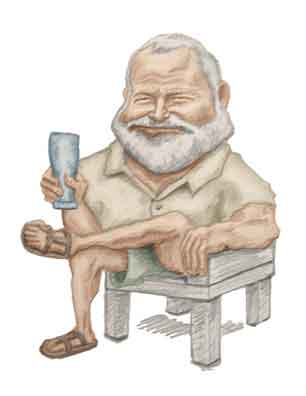
Ernest Hemingway
Frugal Living With a Trust Fund.
And sometimes sponging off their spouses. The American writer Ernest Hemingway always liked to tell the young and impressionable of his hard times and frugal living in Paris when he was supporting his wife and young son. Ernest would tell his friends how he had given up a good job in journalism for free lance fiction writing, all the while crafting a new terse and revolutionary literary style. To the credulous he would add that to economize he would regularly skip lunch and on days when the pot was completely devoid of content would snitch pigeons from the Jardin du Luxembourg.
The reality was that Ernest lived quite well since his wife Hadley had a trust fund of about $200 a month (about $9,000 according to one way of computing today's relative wealth). With the publication of his novel The Sun Also Rises Ernest found Hadley's trust fund was no longer required and from his actions neither was Hadley.
As the Twenties roared on, H. D. kept writing. During the decade she published four more collections, not counting a compilation of all her previous poems in 1927. These volumes were not issued by "patron" supported presses but by the major US firms H. H. Holt, Houghton Mifflin, and Boni and Liveright. She also began writing prose and three of her stories were collected in Palimpsest and published by Houghton Mifflin in 1926.
But with the end of the decade came the end to the good times. By 1930 most of the expatriates had repatriated themselves back to their home countries. Although various reasons have been offered for the collapse of the Good Life, mostly it was because of the start of the decade-long and world wide Great Depression heralded by the Stock Market Crash of 1929. So whether you were a writer getting by from your family's wealth (like Scott Fitzgerald), managing off their wife's trust fund (like Ernest Hemingway), having your rich friends and "patrons" to chip in (like some others), or yes, even by selling books, the money began to dry up.
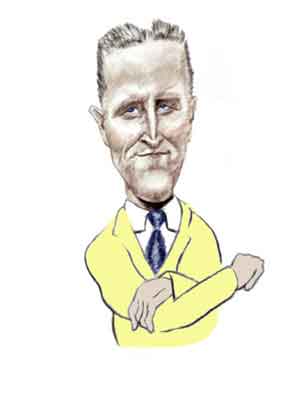
Scott Fitzgerald
Getting By
The good times had ended, but H. D. also felt bad about the way her marriage had turned out. She wondered if her own personality might be at fault. So she thought maybe she should get a professional opinion.
And who could best analyze a person's personality? Well, in the 1930's that was Sigismund Schlomo Freud.

Sigmund Freud
The Best Choice
Once upon a time Sigmund was one of the most admired men in the World. He was also one of the most reviled. To understand how such ambivalence is possible we must actualize our inner selves to foment the progress of antithetical rejection together with the assimilation of disparate fragments of mentality over the idiom of cognition and the acceptance of the unconscious repression of the higher dynamistic personality.
Either that or we don't bother about it.
Instead we'll just say that Sigmund got the generalities pretty good; the specifics not so much. But most of all he was a nineteenth century physician practicing nineteenth century medicine who happened to live well into the 20th century. Read up on any "cures" from a medical textbook from the 1870's and you'll see what type of stuff Sigmund studied.
Although his fees were stiff - $8.10 an hour - for Hilda there was no one who was better qualified in psychoanalysis7. Unlike one patient who found Sigmund's sessions a terrifying experience with him puffing his cigar and venting expostulations, H. D. found him mostly congenial.
Like the first report of the death of Mark Twain, reports of the death of psychoanalysis have been premature. Although psychiatrists more and more treat mental illnesses by medication, there are still practicing psychoanalysts but they tend to be Ph. D. psychologists not M. D. psychiatrists.
The controversy of which treatment you should use - if you need it - arises because the causes of mental issues are varied. Certainly you won't help someone with mental disorders resulting form an intercranial tuberculoma by psychoanalytic sessions any more than you can cure someone with diabetes by having them discuss their childhood.
That's mostly congenial. H. D. certainly didn't think much of his rather condescending attitude toward women. Women, Sigmund said, achieve little in artistic or creative endeavor "unless they have a male companion from whom they drew their inspiration". She disagreed and thought, quite correctly, that Siggy's view was old-fashioned, outdated, bullshine, horse hockey, balderdash, and poppycock. But she didn't hold his 19th century views against him, and in 1956 she wrote of her psychoanalytical experiences in Tribute to Freud.
Anyone expecting a journalistic account of H. D.'s sessions with Sigmund will be disappointed . Instead and as befitting an Imagist, she gives descriptions of Sigmund as he would sit at his desk and meet his patients and mixes in her thoughts of her childhood and impressions on Sigmund himself.
It's also difficult to tell how much of the Tribute is a tribute. Although she calls Sigmund the "Professor" and even the "Master", from the first H. D. seems bent on proving Sigmund doesn't know what he's talking about. In the first session, Sigmund's pet chow, Yofi, came in. When H. D. reached down to pet her, Sigmund cautioned that the dog was difficult and liked to snap at strangers. But she decided not heed the Professor's warning and wrote:
Unintimidated but distressed by the Professor's somewhat forbidding manner, I not only continue my gesture toward the little chow, but crouch on the floor so that she can snap me better if she wants to. Yofi - her name is Yofi - snuggles her nose into my hand and nuzzles her head, in delicate sympathy, against my shoulder.
Making friends with Yofi was one way of H. D. proving that Sigmund's judgement was by no means infallible. But what really irked H. D. was Sigmund's comment that she was a stranger. As she wrote:
Well, I will show you two things: one, I am not a stranger; two, even if I were, two seconds ago, I am now no longer one and moreover, I never was a stranger to this little golden Yofi.
So there.
In the background of H. D.'s vignettes was the growing specter that dictatorships were becoming the preferred the government to solve the world's ills. H. D.'s visits to Sigmund were in 1933 and 1934 and she found it unnerving to see the anti-Semitic graffiti scrawled before the Freud threshold and how flyers and pamphlets were praising the grandson of Maria Schicklgruber as the leader who would give jobs to all good Austrians.
The new war didn't stop H. D. from writing poetry and novels. In 1944 Oxford University Press published the The Walls Do Not Fall, her first volume of a trilogy which was followed by Tribute to the Angels (1945) and Flowering of the Rod (1946). Three more volumes of poems were issued from 1950 to 1961.
Her last book that was published during her lifetime was a novelistic mix of poetry and prose, Helen in Egypt. Hilda lived until 1961 and died in Switzerland. She was cremated and buried in Bethlehem, Pennsylvania.
H. D. left behind a number of unpublished works . In 1979 her memoir of Ezra Pound, End to Torment was published. It was written when she was in a hospital in 1958 which was a time when most Americans saw Ezra as a traitor to his country.
Ezra, as we all know, remains controversial, less for his poetry which remains highly praised, than for his politics which are not. He remained in Italy during World War II and delivered anti-American and anti-Semitic radio broadcasts for Il Duce.
Of course after the war Ezra was arrested for treason. He was questioned by the military and his words and behavior convinced many that he a naive and easily manipulated buffoon. But an army psychiatrist felt he was in the midst of a mental breakdown. Ezra was transferred to America where he was confined to St. Elizabeth's Hospital in Washington, D. C. He never went to trial and was finally released in 1958 and moved back to Italy where Il Duce still had his fans (as he does today). In 1969 he received an honorary doctorate from his alma mater, Hamilton College in New York. Of course, talking about Ezra can take up volumes so we'll go no further.
References and Further Reading
H. D. (Hilda Doolittle) International Society.
"H. D.: 1886–1961", Poetry Foundation, 2002.
"H. D.: 1886–1961", Academy of American Poets.
"The H. D. Biography Wiki", H. D. International Society.
"H. D. (Hilda Doolittle)", Lara Vetter, Oxford Biographies, 2017.
"H. D., A Brief Biography", H. D. (Hilda Doolittle), June 27, 2015, imagists.org.
"Doolittle, Hilda", (10 September 1886 - 27 September 1961)", Caroline Zilboorg, American National Biography, 1999, 2000.
"Ezra Pound: An Inventory of His Collection at the Harry Ransom Humanities Research Center", Harry Ransom Huanities Research Center, University of Texas at Austin.
"How to Write Haiku", Esther Spurrill-Jones, The Writing Cooperative, September 28, 2018.
"Fun with Freud", Dan Piepenbring, The Paris Review, September 10, 2015.
Analyzing Freud: Letters of H. D., Bryher, and Their Circle, Hilda Doolittle and Bryher Ellerman, New Directions, 2002.
The H. D. Book, Robert Duncan, University of California Press, 2011.
Papa Hemingway: A Personal Memoir, A. E. Hotchner, Random House (1966).
A Moveable Feast, Ernest Hemingway, Schribners, 1964.
"Study Reveals That a Lot of Psychology Research Really Is Just 'Psycho-babble'", Steve Connor, The Independent, August 27, 2015.
"Psychiatry Doesn’t Do Psychotherapy Anymore", John M. Grohol, Psych Central, July 8, 2018.
"10 Secrets Your Therapist Won’t Tell You", John M. Grohol, Psych Central, July 8, 2018.
"The Tower of Psychobabble", Jeremy E. Sherman, Psychology Today, October 29, 2013.
"Sigmund Freud: The Phrases You Use Without Realising It", Jon Kelly, BBC News Magazine, September 19, 2014.
"HD: The Brilliant Bisexual Poet Who Clashed With Freud, Pound and DH Lawrence", Francesca Wade, The Telegraph, January 25, 2020.
Tribute to Freud, H. D. (Hilda Doolittle, Pantheon, New York, 1956.
"Rewriting Psychoanalysis: H.D.'s Tribute to Freud", Trivium - Estudos Interdisciplinares, Vol. 11, No. 1, January-June, 2019.
Tribute to Freud Analysis, eNotes.
The Mind, John Wilson, Time-Life, 1964.
"Perdita Macpherson Schaffner (1919-2001)", Val Schaffner, imagists.org, Rev. July 4, 2002.
"Schaffner, Perdita Macpherson", The New York Times, January 6, 2002.
"How Many Americans Know U.S. History?", George H. Gallup Jr., Gallup, October 21, 2003.
"Seven Ways to Compute the Relative Value of a U.S. Dollar Amount - 1790 to Present", Measuring Worth.
The Letters of J.R.R. Tolkien, J. R. R. Tolkien, Houghton Mifflin Company, 1981.
"Imagism", The Concise Oxford Companion to American Literature, Oxford University Press, 2002.
"The Pound Error", Louis Menand, The New Yorker, June 2, 2008.
Return to H. D. Caricature
Return to CooperToons Caricatures
Return to CooperToons Homepage








